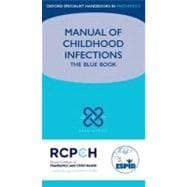
| General | |
| Antibiotics and resistance | |
| Antifungal drugs | |
| Antiparasitics | |
| Antivirals | |
| Bone and joint infections | |
| Cardiac infections: endocarditis | |
| Cardiac infections: myocarditis and pericarditis | |
| Central venous catheter infections | |
| Chronic Fatigue Syndrome (CFS) | |
| Congenital infections | |
| Conjunctivitis | |
| Diarrhoea and vomiting | |
| Emerging and re-emerging infections | |
| Encephalitis | |
| Enlarged lymph nodes | |
| Haemolytic uremic syndrome (HUS) | |
| Healthcare associated infections | |
| Hepatitis | |
| Human Immunodeficiency Virus Infection | |
| Immunocompromised children with infection | |
| Infection control in community settings | |
| Intra-abdominal infections | |
| Invasive fungal infection | |
| Investigating the child with possible immunodeficiency | |
| Kawasaki disease | |
| Laboratory diagnosis of infection | |
| Lower respiratory tract infection | |
| Mastoiditis, quinsy and brain abscesses | |
| Meningitis | |
| Neonatal infection | |
| Ocular infections | |
| Periodic fever syndromes | |
| Pyrexia of unknown origin | |
| Rash - making a diagnosis | |
| Refugees and internationally adopted children | |
| Sepsis syndrome | |
| Sexually transmitted infections | |
| Skin and soft tissue infections | |
| Toxic shock syndrome | |
| Trauma, bites and burns | |
| Travelling abroad with children | |
| The unwell child returning from abroad | |
| Urinary tract infection | |
| Upper Respiratory Tract Infections (URTI) | |
| Zoonoses Specific Infections | |
| Adenoviruses | |
| Amoebiasis | |
| Anaerobic infections | |
| Arbovirus | |
| Ascariasis | |
| Aspergillosis | |
| Botulism | |
| Brucellosis | |
| Campylobacter | |
| Candidiasis | |
| Cat-scratch disease | |
| Chicken pox and Zoster | |
| Chlamydia | |
| Cholera | |
| Clostridium difficile | |
| Cryptosporidiosis | |
| Cytomegalovirus | |
| Diphtheria | |
| Enteroviruses and parechoviruses | |
| Epstein Barr virus | |
| Escherichia coli diarrhoea | |
| Giardiasis | |
| Gonococcal infection | |
| Gram negative bacteria | |
| Haemophilus influenzae | |
| Hand, Foot and Mouth Disease (HFMD) | |
| Head lice (Pediculosis) | |
| Helicobacter pylori | |
| Helminthiases | |
| Hepatitis B | |
| Hepatitis C | |
| Herpes Simplex Virus 1 + 2 | |
| Human Herpes Viruses 6 + 7 | |
| Human Papilloma Virus (HPV) | |
| Influenza and parainfluenza | |
| Legionella | |
| Leishmaniasis | |
| Listeriosis | |
| Lyme disease and other borrelioses | |
| Malaria | |
| Measles | |
| Meningococcal disease | |
| Molluscum contagiosum and other poxviruses | |
| Mumps | |
| Mycoplasma infections | |
| Non Tuberculous Mycobacterial (NTM) infection | |
| Norovirus | |
| Parvovirus | |
| Pertussis | |
| Plague | |
| Pneumocystis pneumonia | |
| Polio | |
| Rabies | |
| Respiratory syncytial virus (RSV) | |
| Rotavirus | |
| Rubella | |
| Scabies | |
| Schistosomiasis | |
| Shigellosis | |
| Staphylococcal infections including MRSA | |
| Streptococcal infections | |
| Syphilis | |
| Tetanus | |
| Threadworm | |
| Tinea | |
| Toxacariasis | |
| Toxoplasmosis | |
| Tuberculosis | |
| Typhoid and paratyphoid (enteric) fevers | |
| Typhus | |
| Viral haemorrhagic fevers | |
| Yellow fever | |
| Yersiniosis | |
| Appendices | |
| The contribution of infectious diseases on neonatal and childhood deaths in England and Wales | |
| Guidance on infection control in school and other child care settings | |
| Immunisation of the normal and immunocompromised child | |
| Notification and surveillance of infectious diseases | |
| Medicine guide | |
| Table of Contents provided by Publisher. All Rights Reserved. |
The New copy of this book will include any supplemental materials advertised. Please check the title of the book to determine if it should include any access cards, study guides, lab manuals, CDs, etc.
The Used, Rental and eBook copies of this book are not guaranteed to include any supplemental materials. Typically, only the book itself is included. This is true even if the title states it includes any access cards, study guides, lab manuals, CDs, etc.